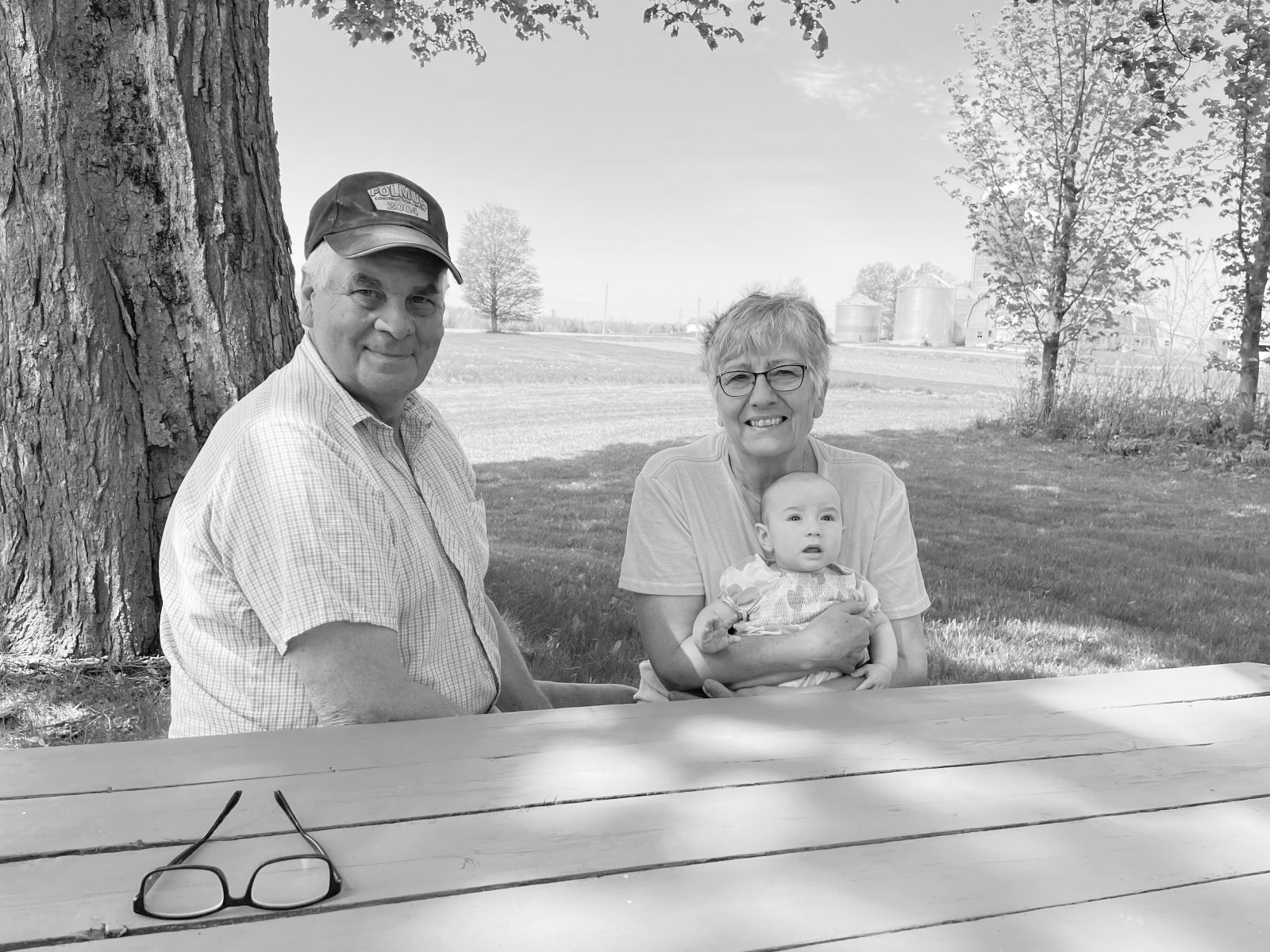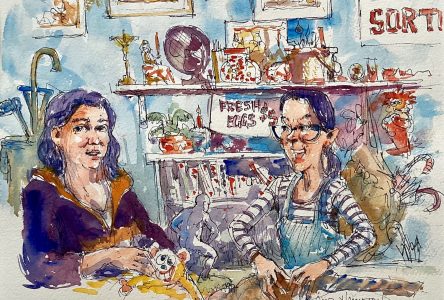It was a hot Saturday morning, the leaves opening to a new season, and the smell of manure infusing my laundry on the clothesline. I was headed across the Stoke Mountains for an interview with retired dairy farmers Douglas Beard and Marion Mastine in Saint-Felix-de-Kingsey near Richmond. I would be driving without a paper map; you can hardly find them anymore. Google Maps said the trip would take one hour and seventeen minutes for its recommended route—which was not the fastest, surprisingly, but rather the “most fuel efficient.” Was that because the application already knew me or because the times have changed?
The times certainly have changed. Around Saint-Felix, “dairy farms used to be everywhere,” Beard said, sitting at a picnic table under a big, shady maple by his new retirement property. Only 10 dairy farms remain in the municipality, he said—bigger farms, fewer farmers.
But this 71-year-old retiree and his partner know how to move with the times. They had their farm succession and retirement plan all wrapped up 10 years ago.
“You come to the point that you can’t do it anymore,” said Marion Mastine, 68, after Beard called her over from the garden to join us. She described their life of building up and running the farm as very difficult—long days, every day. “We started holidaying in 1994 only,” 21 years after acquiring their farm, Mastine said.
Beard had a different perspective. “I was born and brought up on a farm. You realize that this is the way it is… For me, I think it’s turned out pretty good for us.”
Doug and Marion’s son Jason and his partner Erin finished buying the family farm from their parents 10 years ago. They started in 2000, after Jason graduated from Macdonald College and got his government grant to start farming. Both Jason and Erin are now working the 50-cow dairy operation full time—with the rapidly growing help of their two sons Liam, 11, and Nolan, 9.
In 1973, Doug and Marion started out when they took over the inactive family farm from Marion’s grandmother, Edwina Searle-Mastine, known in the area as “Gram Stevens”. They were 24 and 19 years old; Doug worked for Bombardier at first, while Marion studied nursing. When Marion graduated and took a position at the Wales Home, Doug quit, “stayed home and had at it”—to rebuild the farm from scratch, full time.
“We just kept buying cows and quota,” he said, and they added Doug’s father’s farm in 1980 to bring their total to 40 cows and over 400 acres.
The couple’s smart business planning carried on to their retirement. When the farm next door came up for sale, they borrowed money on their existing farm to buy it, kept the house in their name, and added the 40 acres of land to Jason and Erin’s business on the original farm. Doug brought his five Salers beef cattle over, and Marion her woodstoves.
“I think it’s really good,” Beard said. “I’m pretty much retired but I can go over and help when I want.”
Mastine continued her nursing work throughout their farm-building years and has now slowed down to part-time with her job at the CLSC in Drummondville.
The problem she described in the demands of farming is the lack of help and time away. She said that government assistance programs, like the Financière Agricole du Québec, “need a program to solicit people to do relief work. Why can’t they do that?” she asked. “They don’t help enough at all.
“We were lucky, we had neighbours that helped,” she said, when they were finally able to vacation.
Another important solution, Beard said, is to keep the farm “to a size that you can manage on your own.”
While they had their share of challenges in the busy years, they both found ways to adapt and now flourish.
Marion would like Doug to cut the trees down between their house and Jason and Erin’s, so she can see what’s happening there. Doug won’t, citing in part the brook the trees are protecting.
They built a small sugar cabin next to their house as a family project, tapping 250 trees with buckets. Marion said one of her conditions for moving out of Gram Stevens’ house was that both woodstoves move with her. The cook woodstove—where her grandmother used to bake 10 to 12 loaves every three days—is now in the sugar cabin. The magnificent heating woodstove is on prominent display in their home, standing in a bay window looking down the hill toward its old farmhouse.
They’re both clearly happy to be close to grandchildren and to generations of farming roots.
“I certainly got no intention of going anywhere,” Doug said.
Scott Stevenson farms and writes at his home in Newport, Quebec.



